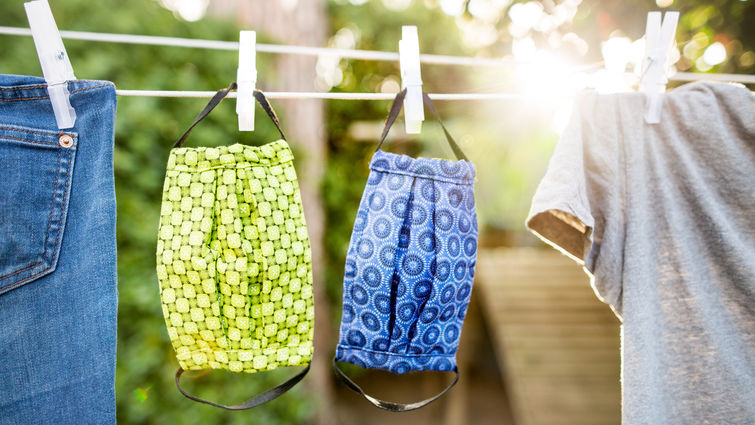
Now that the Centers for Disease Control and Prevention (CDC) has recommended wearing face masks in public to slow the spread of COVID-19, it’s important to know how to properly wash, disinfect and handle reusable cloth masks.
Ryan Sinclair, PhD, MPH, associate professor of environmental microbiology at Loma Linda University School of Public Health says his research supports that fabric, when not properly disinfected, are carriers for both bacteria, including E. coli, and viruses — norovirus and coronavirus.
Sinclair says pathogens like bacteria and viruses can live on cloth fabric for longer than one may think — up to 8-12 hours. “Because we don’t know what germs we’ve been in contact with or how low long the germs have been active on the cloth fibers, it is crucial to regularly wash, sanitize and dry reusable face masks,” Sinclair says.
Part of wearing a mask is washing a mask. Here’s the best way:
How to clean, disinfect and dry your cloth mask
Although it may be time-consuming to wash reusable masks daily, after each use, Sinclair says this healthy habit is essential to prevent germ transmission. “Have a few extra face masks on hand so they can be rotated,” Sinclair says. “That way you will always have a fresh, clean mask ready to use.”
Masks made from a cotton material stand up best to hand or machine washing with bleach or other disinfectants. “These fabric masks are the easiest to clean and dry properly,” Sinclair says.
Sinclair says to wash your hands for at least 20 seconds with soap and warm water before and after handling soiled masks.
Launder masks by completing these steps:
-
Remove detachable parts like interior filters or elastic ear bands from a folded scarf or bandana before washing.
-
Use a mesh laundry bag to reduce entanglement with other clothes during machine washing.
-
Set machine water temperature to high or use water that is 140° Fahrenheit or higher.
-
Use your washer’s “sanitize” cycle if it has one.
-
-
Add a detergent that contains disinfectant or bleach to ensure you’re killing as many germs as possible.
-
If washing by hand, prepare a bleach solution of five tablespoons bleach per gallon of water, soak for at least five minutes and rinse thoroughly.
-
-
Dry masks on the highest dryer setting or use direct sunlight to dry masks.
-
Because household dryer temperatures rarely reach the threshold temperature you need for disinfection, consider adding disinfectant dryer sheets or dryer sanitizers.
-
Ultra-violet light from the sun can kill up to 99.99% of pathogens on the sun facing surface of a mask if it is left in the bright sun during the middle of a day for at least one hour. It is best to allow masks to be exposed to the sun and heat for an entire day — flipping it over mid-day. Hang dry the masks or construct a dedicated portable box or surface for solar disinfection.
-
Face mask hygiene etiquette
To further reduce risk of infection, Sinclair offers these hygiene etiquette tips:
- Always wash your hands or use hand sanitizer before you put on your mask.
- Make sure your mask is facing the right direction, so your face is not touching the mask exterior.
- Wear your mask snuggly over both your nose and mouth.
- Try not to touch the mask while you’re wearing it.
- When removing the mask, touch only the attached strings or elastic bands. Hold it or place the mask on a sanitized surface until you’re ready to or wear it again or throw directly into the washing machine when you get home. Then wash your hands again.
In addition, Sinclair advises washing your hands frequently, keeping surfaces at home sanitized and avoid touching high-traffic public areas, like counters, handrails and doorknobs.
“If you practice these habits, you will be less likely to contract the virus, whether it’s on your mask or another surface,” Sinclair says.
